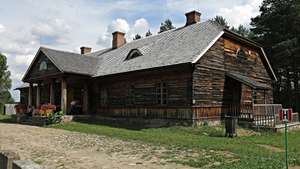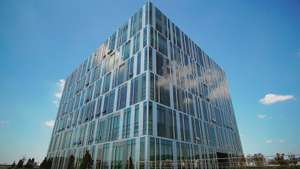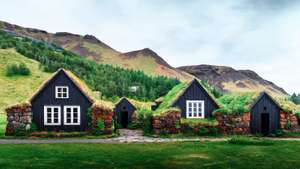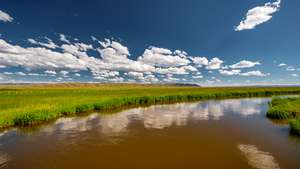
Impact of the biodestruction on wooden buildings of the Bialystok open air museum.
 Alona Perebynos 1*,
Alona Perebynos 1*,  Tetiana Kryvomaz 2
Tetiana Kryvomaz 2
1,2Architectural Structures Department of Kyiv National University of Construction and Architecture.
Received: 03/10/2018, Accepted: 03/18/2018, Available online: 03/20/2018.
DOI: 10.32557/useful-2-1-2018-0001
*Corresponding author: alenaperebinos@gmail.com, Povitroflotsky Avenue, 31, Kyiv, 03680 Ukraine
Under a creative commons license. Volume 2, Issue 1, 2018, pages: 1-9.
Author Keywords: qualitative depletion, environment, nature management, water pollution index, ecological index
ABSTRACT
The article describes the state of the buildings of the Bialystok open air museum (Poland). The preliminary survey of biodestruction in the Bialystok open air museum shows that wooden buildings are in good condition and 92% of historical and architectural constructions were estimated to the second category of technical state. Buildings were examined to identify kinds of biological agents by using an algorithm of the monitoring of historical monuments. The main biodestructions of wooden constructions was made by insects, lichens, algae films and colonies of microfungi. In the article a comparison of biodestruction impact was made for Bialystok and skansen «Pyrogovo» (Ukraine). Entomological damage prevails among biodestructions of wooden elements of historical and architectural structures both in the Bialystok skansen and in the «Pyrogovo».
1. Introduction
An open-air museum is a category of museum that exhibits collections of buildings and artifacts out-of-doors. Skansen is the first open-air museum in the world and is located on the island Djurgården in Stockholm, Sweden. It was founded in 1891 by Artur Hazelius to show the way of life in the different parts of Sweden before the industrial era. Later the name "skansen" has also been used as a noun to refer to other open-air museums and collections of historic structures. European open-air museums are variously known as skansen, museums of buildings and, sometimes, folk museums (Bashkatov and Terpylovsky, 2011, Rentzhog, 2007).
Until today, the open-air museum is one of the most common ways to preserve the cultural heritage of the people. Skansen is a research institution that collects, studies and documents the monuments of material and spiritual culture in detail. In addition, many of these museums are cultural and educational centers where museum activities cover only part of their overall development program (Danyliuk, 2006).
The objectives of this work is to assess the impact of bio damages on wooden buildings of the Bialystok open air museum, in order to promote the preservation of architectural and historical values in its original and holistic form from the destruction.
1.1. Bialystok Open Air Museum
Bialystok Open Air Museum is the Branch of Podlaskie Museum in Bialystok where situated the historic wooden architecture of Podlasie countryside. In the skansen, there are residential (cottages, manor houses, blackcaps, forester’s houses); farm buildings (barns, granaries, stables, livestock buildings, etc.) included the small architecture (crosses, shrines, wells, dings) and three windmills. The Bialystok Open Air Museum is developing constantly by moving new buildings from the area of Podlaskie district. Bialystok Open Air Museum was founded in 1982 as the Department of the District Museum in Bialystok. The projects of wooden construction protection in the region of Bialystok by creation a museum like the heritage park has been established in the sixties. For the heritage park museum, a "village" form was chosen as the most fully reflecting the natural cultural landscape of villages in north-eastern Poland.
In 1984 the first building was moved into the museum - it was the forge from the Grodek. An intensive construction works was continued until 1991, when the funds for the further development of the museum were limited. A forest farm and nobleman's hamlet was reconstructed there. It also managed to move the manor with a granary to the future sector presenting manor building. A windmill, a water mill and a smithy was also moved to the heritage park. To the beginning of the nineties almost thirty buildings has been successful moved into the museum.
In November 1994 a fire broke out, nine buildings completely burned down, the tenth was saved, but intended only for non-exhibition use. The heritage park area was limited to approximately thirty hectares. This appreciable reduction of the museum area allowed to fence and secures many buildings of emergency installations. Since the end of the nineties, the architectural buildings started moving to the heritage park again (Gaweł, 2012).
1.2. Biological damage of wooden structures
The museum wooden structures in the process of storage expose to a number of adverse internal and external factors. The internal factors include technological properties and features of the wood; conditions and mode of storage belong to the external factors. The main environmental factors, that promote and exacerbate the development of mycological damages, primarily include increased humidity (22-50%) and temperature range 20-22°C and above, absence or lack of the ventilation and natural light, as well as increased air pollution (Koval and Mytkivska, 2011).
Falling to the surface of structures, fungi produce enzymes in its process of life that in the interaction with components of construction wooden materials turn them into more available organic compounds (water and carbon dioxide). Usually the end result of the mycodamage process is the destruction of organic matter, i.e. change the anatomical structure of the material and the loss of proper physical and mechanical properties (Varchenko, 2014, Knyazeva, 2005).
The reason of mycological factor begins to appear is combination the natural aging process of wood with exploitation process of construction and dangerous environmental factors. Mycological damage is much more relating to the storage conditions of architecture construction than to the nature of the wooden material. Thus, the state of museum wooden structures depends on the level of preventive measures, requiring regular mycological examination for the prevention of mycological destructor development.
2. Materials and methods
During the inspection of buildings we followed an algorithm of the monitoring of historical monuments, which was developed during the research in the museum «Pyrogovo». The algorithm consists of the following items: observation, analysis, assessment and comparison of results. In this study has been performed the first stage of the algorithm – «observation» (Perebynos, 2016). The primary inspection of buildings has been carried out to identify the biological damage in general.
The stage consisted of visual inspection of buildings and description of the studied architecture construction. The following elements of buildings have been examined carefully because they belong to highly probable areas of the destruction by biological agents: joints of logs, girders and boards; knots and cracks of wooden parts of structures; places without natural light and ventilation; attics; places near the surface of the soil; under the roof; etc. Characteristic features of mechanical (cracks, crumbling, peeling), entomological (holes of beetles, web) and other biological (fungi colony and marks, algae films, discoloration of wood) damages are marked during the examination.
To research have been involved 12 buildings of the forestry and manorial sectors of the Bialystok Open Air Museum: a forester’s house from Lipniak, a barn from Karczmisko, a granary from Karczmisko, a stable from Karczmisko, a blackcap from Krusznik near Wigry, a barn from Wdowin, a livestock building from Krusznik, a cottage from Jacowlany, a granary from Lewki, a cottage from Stara Grzybowszczyzna, a barn from Nowy Ostrów near Krynki and a manor from Bobra Wielka.
3. Results and Discussion

A comparison of biological damages between some structures of the Bialystok open air museum in Poland and the National Museum of Folk Architecture and Life of Ukraine "Pyrogovo" presented in the table 1. Research of biogenic damage of wooden structures in the "Pyrogovo" was started in February and lasted until May 2015. As a result of the initial examination of wooden buildings of historical and ethnographic exhibits were created the previous database for biodeterioration monitoring and supervision of the technical condition in compliance with environmental safety (Kryvomaz and Perebynos, 2015).

The comparison showed a significant difference between technical condition of buildings despite the fact that for this were used buildings with the appropriate technological purpose (residential, household or public buildings) and approximately the same age. In our opinion this is due to a small, but apparently significant difference, in the climate and the mode of operation of historical and architectural structures. The climate in Bialystok is drier than in Kiev, which can affect the formation of biological damages (mycological, algological, etc.).
Damage of wooden structural elements of buildings such biological agent as lichen was recorded in two buildings as in Bialystok museum and in the «Pyrogovo». Algae films were recorded only on one building in the Bialystok skansen and on four in the open air museum «Pyrogovo» (Fig.2). It should be noted that such biological destructors as green algae, lichens and mosses have a feature to appear only on the outer parts of structures. The reason is that these organisms are capable to the photosynthesis, so the light is vital in their life as well as other outdoor environmental factors. Fungi and beetles are universal biodestructors that damage wooden structures both outside and inside the building.
Mycological damages were described in six buildings of Bialystok skansen as spotted colonies and in eleven buildings in the museum «Pyrogovo» as stains, wood discoloration and spotted colonies as well. Entomological damage was observed most among biodeteriorations of wooden constructions: eleven buildings in the Bialystok open air museum and ten buildings in the «Pyrogovo» (Fig.2).


According with this 92% of examined buildings were evaluated as the second category of the technical state, 8% refer to the first, third and fourth category are absent in the Bialystok skansen (Fig.3). In the comparison with the skansen «Pyrogovo» 42% of the presented buildings belong to the second category, 50% - the third, 8% - the fourth absent (Fig.4). It is important to note, that buildings in «Pyrogovo» were removed from their original places from whole Ukraine to the museum territory. This acts and changing of their native environment made the significant effect on the state of wooden constructions.
Conclusion
- The preliminary survey of biodestruction in the Bialystok open air museum showed that wooden buildings are in good condition and 92% of historical and architectural constructions were estimated to the second category of technical state.
- The inessential biological damages of studied wooden constructions were caused by entomological, mycological, algological and lichenological agents.
- Entomological damage prevails among biodestructions of the wooden elements of historical and architectural structures both in the Bialystok open air museum and the open air museum «Pyrogovo».
- The comparison of both skansens showed that the condition difference of wooden constructions depends from original state of buildings, exploitation process and environmental factors.
References
- Bashkatov, Yu. Yu., Terpylovsky, R. V. “To the history of scansens in Europe. Archaeology and ancient history of Ukraine.” ІА NASU, 5, 7-16. - 2011.
- Danyliuk, A. “Ukrainian Skansens. History of origin, expositions and development problems. Ternopil.” Ukraine: Dogdan, 104. - 2006.
- Sten Rentzhog. “Open-air museums: The history and future of a visionary idea.” Carlsson Jamtli Förlag, Stockholm and Östersund. - 2007.
- Gaweł, A. “Białostockie Muzeum Wsi. Przewodnik. Białystok.” Poland: Muzeum Podlaskie w Białymstoku, 80. - 2012.
- Koval, E. Z., & Mytkivska, T. I. “Mycological investigation of museum artefacts.” Kyiv, Ukraine, 232. - 2011.
- Varchenko, E. A. “Estimation of biodegradation and bio-corrosion of materials in natural environments.” Scientific Journal of KubSAU, 104 (10), 1948–1965. - 2014.
- Knyazeva, V.P. “Ecology. Restoration Basics.” Textbook for High Schools. Moscow: Architecture, 399. - 2005.
- Perebynos, A. “Algorithm of micodestruction monitoring of historical and architectural wooden structures.” Proceedings of the 1st All-Ukrainian scientific conference of young scientists, postgraduate students and students “Bud-Master-Class”. (p. 70-71). Kyiv: KNUCA. - 2015.
- Kryvomaz, T.I. Perebynos, A.R. “Preliminary evaluation of fungal destruction of wooden construction in NMFALU “Pyrohiv”. - Ecological security and nature use, 2 (18), 66-75. - 2015.
- “Systema zabezpechennia nadiinosti ta bezpeky budivelnykh obiektiv. Obstezhennia i pasportyzatsiia tekhnichnoho stanu budivel ta inzhenernykh sporud (proekt, druha redaktsiia).” [“System reliability and safety of construction projects. Inspection and certification of technical condition of buildings and engineering structures (draft, second edition)”]. (2012). DSTU B V.1.2-№: 201Х. Kyiv: Minregion Ukraine [in Ukrainian].
Please cite as: A. Perebynos and T. Kryvomaz, “Impact of the biodestruction on wooden buildings of the Bialystok open air museum,” USEFUL - online journal, vol. 2, no. 1, Mar. 2018. DOI: https://doi.org/10.32557/useful-2-1-2018-0001









Comments